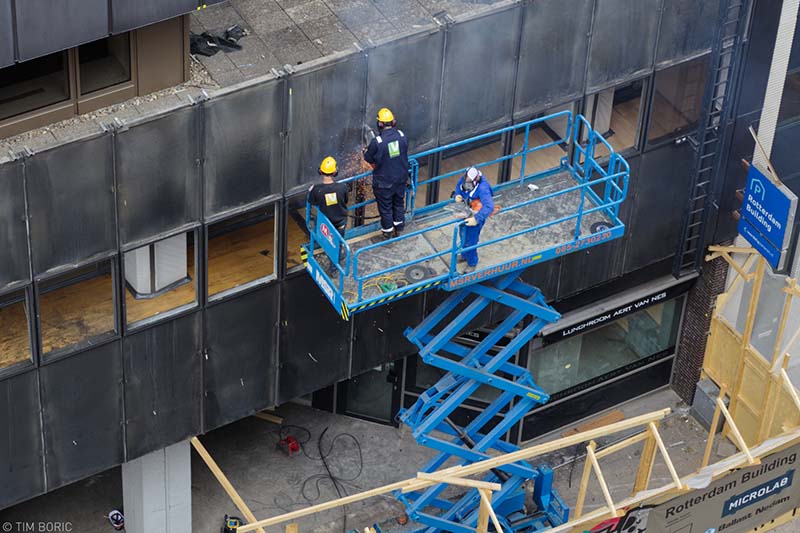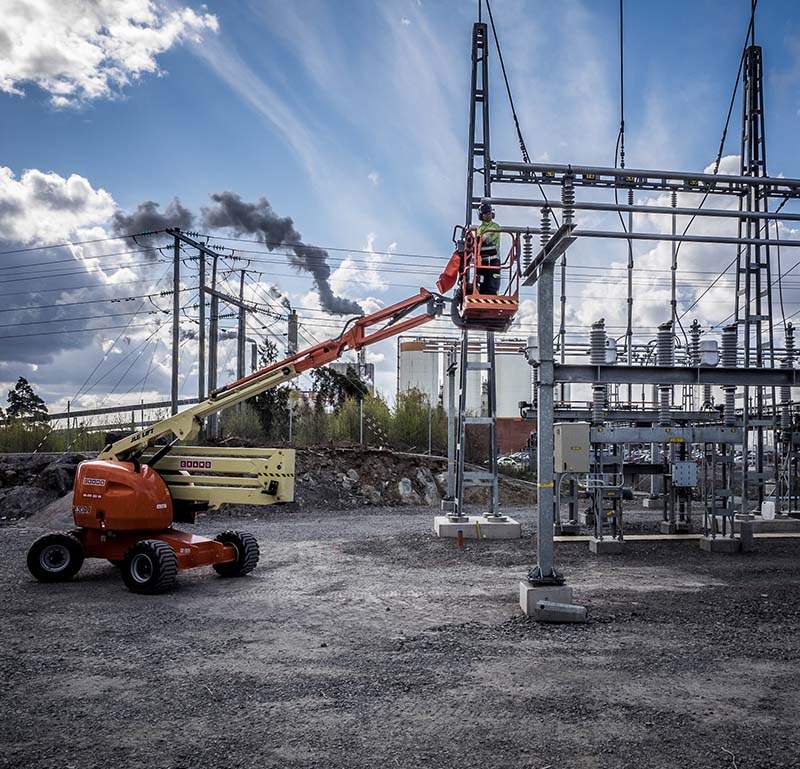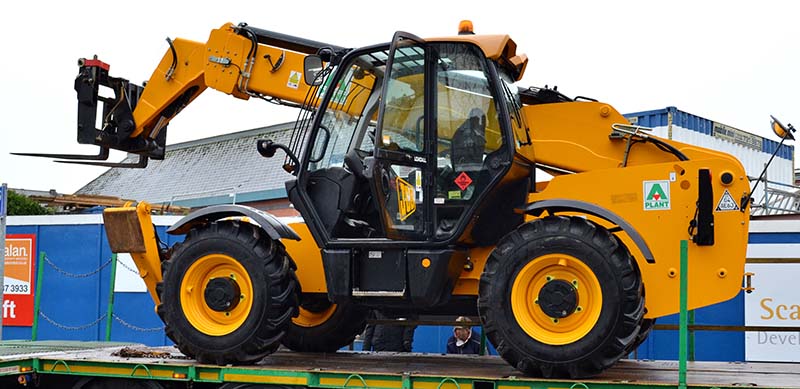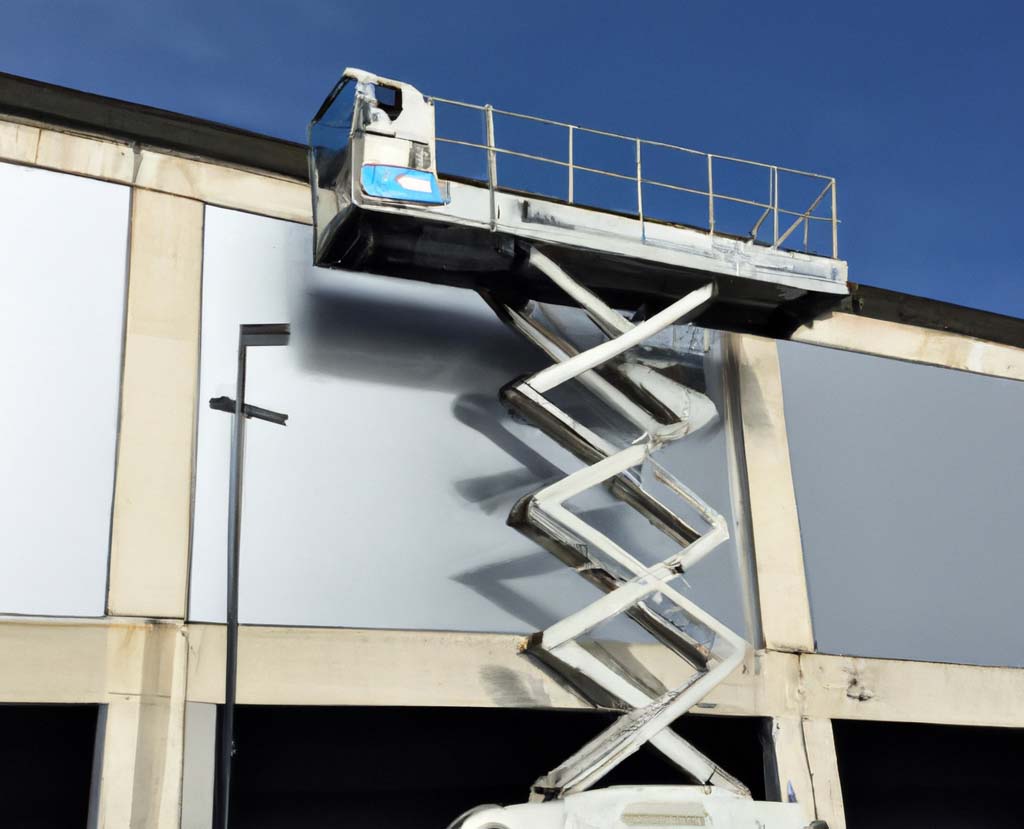With the complexities of construction and manufacturing projects, it makes sense that there are different types of aerial lifts. Each one serves a distinct purpose. It's important to familiarize yourself with the types of aerial lifts and their functions so that you can determine which is best-suited for your specific needs.
Scissor Lifts

Scissor lifts can be electrical, which is ideal for indoor use since they function on flat surfaces and do not emit any toxic gases. They can also be internal combustion engine powered, which is better suited for outdoor construction projects and can traverse rougher terrain. Scissor lifts derive their name from their structure, which includes crisscrossed metal supports that expand when raising and contract when lowering.
Scissor lifts serve a similar purpose to a ladder or scaffolding, but provide more security with a hydraulic platform that raises directly above the base. These large mobile platforms typically allow for multiple people. Common jobs that require the use of a scissor lift may be window maintenance, changing electrical fixtures, and changing signs or banners. Scissor lifts are also common on construction sites and are useful for jobs such as pouring concrete, bricklaying, and overhead welding.
How much do Scissor Lifts Cost?
Rental prices vary depending on the size of the scissor lift with additional fees for delivery and pickup. On average, scissor lift rental costs $100 to $150 daily. Monthly rates range from $800 to $1,500.
Boom Lifts

Unlike scissor lifts, boom lifts, which are also referred to as cherry pickers and basket cranes, consist of a platform or basket that extends outward from their base and can reach higher elevations. Boom lifts are often attached to trucks or vans, making them easy to transport. There are two types of boom lifts: articulating and telescopic. The different types will dictate the mobility of the platform, maximum weight load, and extension.
Articulating Boom Lifts
Articulating boom lifts, also known as knuckle booms, are more flexible than other aerial lift options because they have two hinged joints, allowing for 360-degree rotation. Their versatile design means they can fit in narrow spaces. These lifts can reach heights between 30 and 140 feet and typically have a load capacity between 500 and 1,000 pounds. Articulating boom lifts are ideal for electrical and piping repairs or exterior cleaning and outdoor maintenance projects.
Telescopic Boom Lifts
Telescopic boom lifts have a straight arm that is attached to a freely rotating turntable and tend to accommodate only one person. These machines are typically used outdoors and have the highest reach among other aerial lifts, reaching heights between 40 and 185 feet and carrying loads between 500 and 1,000 pounds. Telescopic boom lifts are used for a variety of specialized work including tree trimming, HVAC system installation and maintenance, bridge and multi-story building work, and even fire rescues.
How much do Boom Lifts Cost?
Average boom lift rentals vary depending on the type of boom lift you are interested in. They generally range between $250 and $400 for daily rentals and between $1,000 and $1,500 for weekly rentals.
Telehandlers

Telehandlers are essentially telescope boom lifts that are fitted with a lifting attachment, making them comparable to forklifts. Commonly used in the agricultural and construction industries because they can handle rough terrain, telehandlers have the ability to extend to greater heights than traditional forklifts.
While they are often compared to cranes, telehandlers are more practical and efficient considering the extendable arm can reach less accessible cargo areas and allow for more flexible load placement.
How much do Telehandlers Cost?
Average telehandler rental prices are between $225 and $800 a day or $1,000 to $5,000 a month depending on the size of the machine needed.
Which Type of Aerial Lift is Right for Me?
Aerial lifts can fulfill a wide range of purposes and it is important to consider the type of work you will be doing in choosing the right one. If your job is indoors, an electrical scissor lift may be your best option since they can be easily compacted and do not emit toxic fumes. If your job requires basic outdoor activity, an articulating boom lift provides excellent mobility and rotation capabilities. If you need to reach especially high elevations, a telescopic boom lift can achieve the furthest distances. If you are planning to navigate rough terrain, an internal combustion scissor lift or telehandler will work well due to their engine power and sturdiness on uneven ground.
